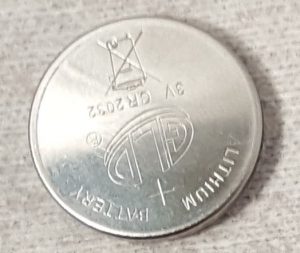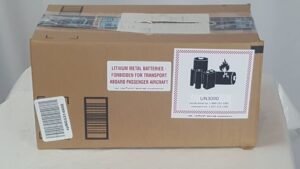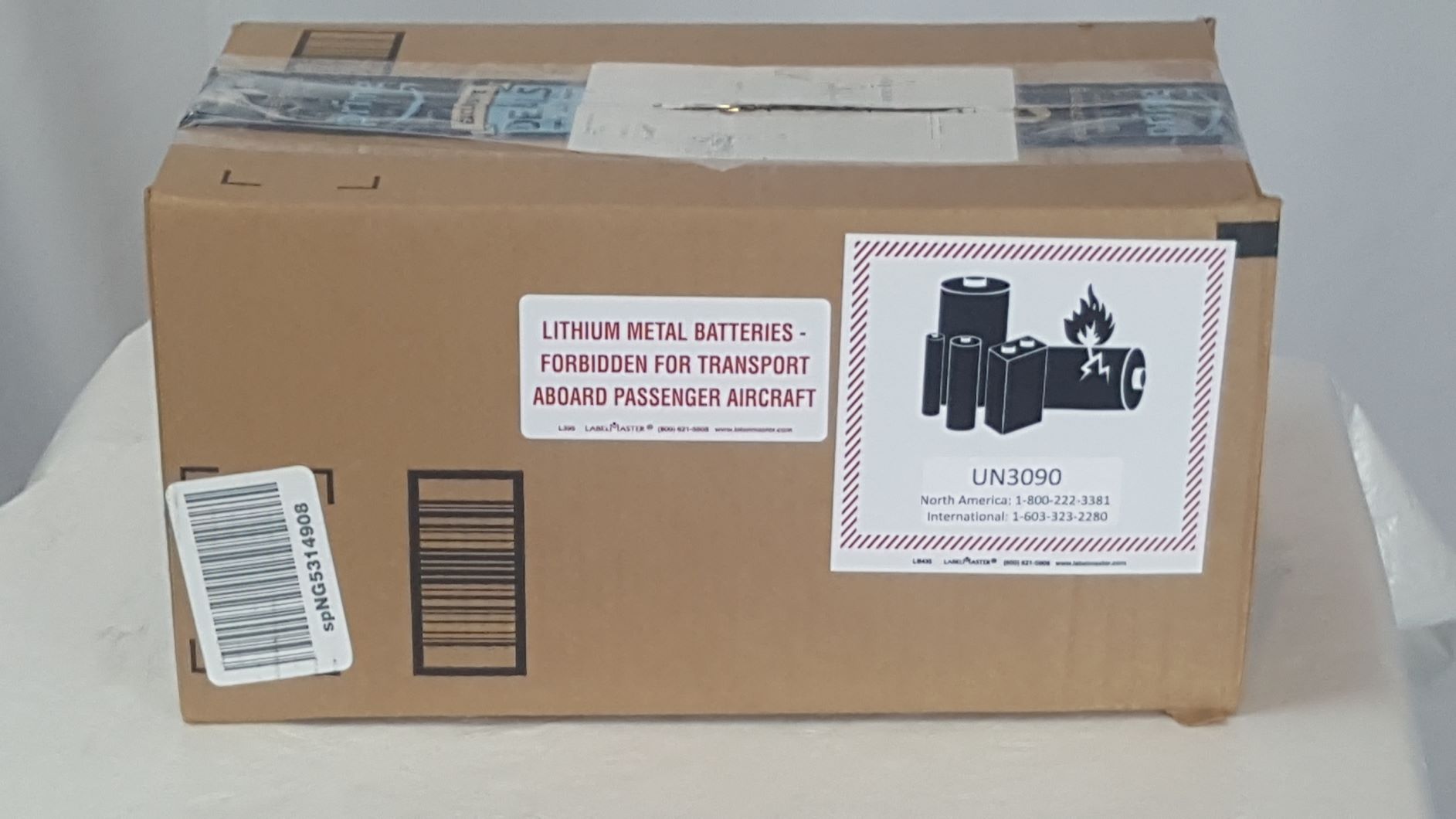A question (09.30.20):
We are a company the produces products that contain a lithium metal cell battery as a back up battery for the time and date. The cell contains 0.015g of lithium, and the products have one of these built into them.
I have gone through the training program and am certified for shipping batteries, but as you are already well aware, the regulations are a VERY difficult read. I have spent 30+ hours pouring through them thus far, largely because we use lithium metal cells and we use lithium ion batteries as well (34g of lithium in each) , and the regulations are different between them.
My question is this. In reading through 49 CFR 173.185, I am confused by the content in 173.185(c) Exceptions for smaller cells and batteries. If I am reading that correctly, as long as the singular lithium metal cell and in some models a singular lithium ion battery are built into our equipment and are mechanically secure and the product is in an OFF state, we are not required to apply the lithium warning labels on the products. Where we need apply the special markings is when we ship the cells or batteries out as a replacement part.
In your opinion, am I understanding this correctly?
Your confirmation/clarification on this would be greatly appreciated.
Daniels Training Services, Inc. 815.821.1550 |
My reply that same day:
Thank you for contacting me.
You are not entirely correct. Please see below for clarification.
- Lithium ion and lithium metal batteries have the same packaging requirements under the USDOT/PHMSA Hazardous Materials Regulations (HMR). As you indicate, these are found at 49 CFR 173.185.
- You may be confused with the packaging requirements for transportation of lithium batteries by air according to the Dangerous Goods Regulations of the International Air Transport Association (IATA). Those have separate packing instructions for lithium ion batteries (PI 965, 966, 967) and lithium metal batteries (PI 968, 969, 970).
- Also you refer to lithium metal cells and lithium ion batteries as having “…34g of lithium in each”. While lithium metal cells and batteries are classified according the grams (g) of lithium they contain, a lithium ion cell or battery is classified by its Watt-hour (Wh) rating.
- Also, a lithium metal cell or battery with 34 grams of lithium metal is not a smaller lithium battery applicable for the packaging exception at 49 CFR 173.185(c). It instead is subject to full packaging requirements of 49 CFR 173.185(a-b). A lithium ion battery with a Wh rating of 34 is a smaller lithium ion battery eligible for the smaller lithium battery exception at 49 CFR 173.185(c). See below for a table summarizing the classification of lithium batteries based on lithium content.
| Industry and EPA hazardous waste No. | Hazardous waste | Hazard code |
|---|---|---|
| F020 | Wastes (except wastewater and spent carbon from hydrogen chloride purification) from the production or manufacturing use (as a reactant, chemical intermediate, or component in a formulating process) of tri- or tetrachlorophenol, or of intermediates used to produce their pesticide derivatives. (This listing does not include wastes from the production of Hexachlorophene from highly purified 2,4,5-trichlorophenol.) | (H) |
| F021 | Wastes (except wastewater and spent carbon from hydrogen chloride purification) from the production or manufacturing use (as a reactant, chemical intermediate, or component in a formulating process) of pentachlorophenol, or of intermediates used to produce its derivatives | (H) |
| F022 | Wastes (except wastewater and spent carbon from hydrogen chloride purification) from the manufacturing use (as a reactant, chemical intermediate, or component in a formulating process) of tetra-, penta-, or hexachlorobenzenes under alkaline conditions | (H) |
| F023 | Wastes (except wastewater and spent carbon from hydrogen chloride purification) from the production of materials on equipment previously used for the production or manufacturing use (as a reactant, chemical intermediate, or component in a formulating process) of tri- and tetrachlorophenols. (This listing does not include wastes from equipment used only for the production or use of Hexachlorophene from highly purified 2,4,5-trichlorophenol.) | (H) |
| F026 | Wastes (except wastewater and spent carbon from hydrogen chloride purification) from the production of materials on equipment previously used for the manufacturing use (as a reactant, chemical intermediate, or component in a formulating process) of tetra-, penta-, or hexachlorobenzene under alkaline conditions | (H) |
| F027 | Discarded unused formulations containing tri-, tetra-, or pentachlorophenol or discarded unused formulations containing compounds derived from these chlorophenols. (This listing does not include formulations containing Hexachlorophene sythesized from prepurified 2,4,5-trichlorophenol as the sole component.) | (H) |
Please forgive me if the above clarifications seem dismissive, but I wanted to clear up any misconceptions before proceeding. You are correct that the regulations for the transportation of lithium batteries are very complex.
Please see below for an answer to your question:
- All lithium cells and batteries, regardless of lithium content or whether lithium metal or lithium ion, if contained in equipment have the same basic packaging requirements under the HMR [49 CFR 173.185(b)(4)]:
- Outer packaging, if used, must be constructed of suitable materials of adequate strength and design…
- Outer packaging isn’t required if batteries are contained in equipment that provides equivalent protection.
- Equipment must be secured against movement within the outer packaging (if used, see above).
- Equipment must be packed to prevent accidental operation during transport. Note, this is more stringent than, “…product is in an OFF state”.
- Hazard communication per 49 CFR 173.185(c)(3):
- A package solely of button cell batteries contained in equipment is not required to display the lithium battery mark regardless of the number of batteries or number of packages in the consignment. This may be your situation as you refer to a lithium metal cell battery as a backup battery for time and date.
- A package solely of smaller lithium cells or batteries (not button cell) contained in equipment must display the lithium battery mark only under the following circumstances:
- More than four (4) cells contained in equipment.
Or…
- More than two (2) batteries contained in equipment.
Or…
- More than two (2) packages of either per consignment.
- So, unless your package or consignment is above one of those thresholds, the lithium battery mark is not required to be displayed on a package of a lithium cell or battery contained in equipment.

- Also, pursuant to §173.185(c)(1)(iii) a package of smaller lithium cells or batteries contained in equipment must display the Cargo Aircraft Only label or a specified package mark indicating the package is not acceptable as cargo on a passenger aircraft if the net quantity of lithium battery in the package is more than 5 kg.
- A smaller lithium cell or battery packed alone must always display the lithium battery mark. It must also display the Cargo Aircraft Only label or a specified package mark indicating the package is not acceptable as cargo on a passenger aircraft.
I suggest you contact me for further clarification.
Like this article? Subscribe to my Monthly Newsletter No marketing emails! |
He didn’t. So I guess that was it.
Conclusion:
The regulations for the transportation of lithium batteries (cells or batteries) are complex and they change frequently. Another factor is the differing regulations for different modes of transport: highway and rail (i.e., ground) v. vessel v. aircraft. Contact me with questions or if you require the training necessary to safely transport lithium batteries.

